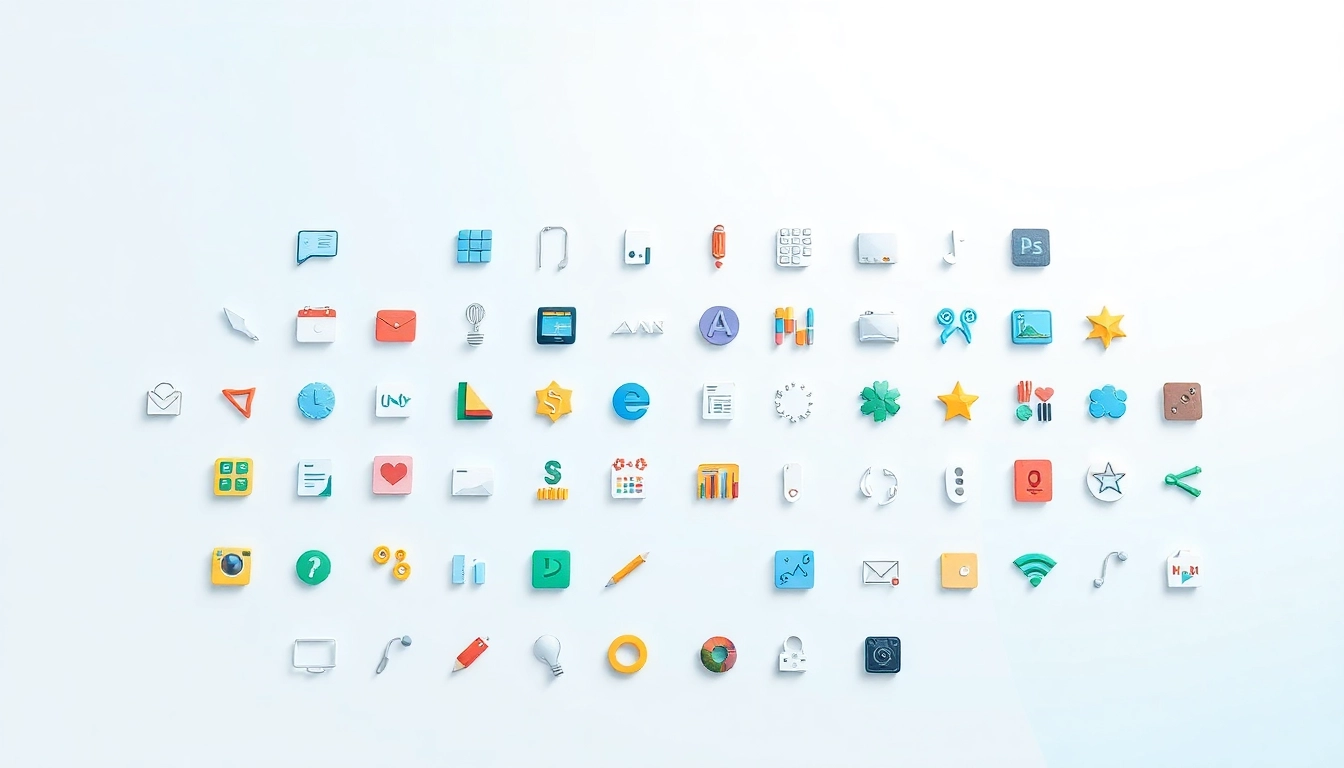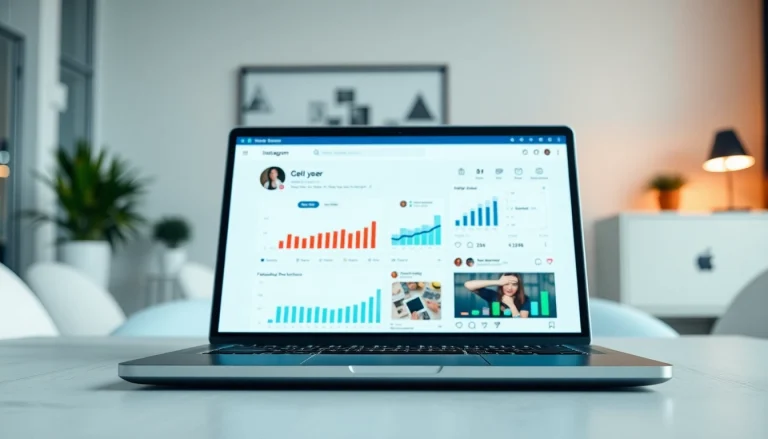The Importance of Icons in Modern Design
Icons have become an indomitable part of modern digital design, serving not just as aesthetic elements but also as critical communicative tools in user interfaces and branding. The strategic use of Icons elevates user experience by enhancing navigation and usability while contributing to an organization’s visual identity. This article delves deeply into the multifaceted role of icons, exploring their significance, types, best practices for design, tools available for creating them, and future trends within the realm of iconography.
Understanding Icons and Their Impact
In the context of design, icons are simplified images used to represent a concept, object, or action. The beauty of icons lies in their ability to convey meaning quickly and effectively, transcending language barriers. Icon usage can significantly impact user comprehension. For example, an icon of a magnifying glass universally signals a search function, allowing users from diverse backgrounds to navigate interfaces more intuitively.
Historical Evolution of Icon Design
The journey of iconography dates back centuries, rooted in ancient civilizations largely to convey story and meaning. In modern digital design, icons evolved alongside technological advancements, initially represented in pixel art before transitioning to vector-based graphics, providing scalability and flexibility. The introduction of flat design and minimalism in the 21st century further transformed icons, pushing designers to create simpler yet bold representations that maintain clarity even at smaller sizes.
Current Trends in Iconography
Today’s design landscape showcases various trends in iconography, from minimalistic flat icons to intricate 3D designs. Animated icons are gaining popularity as they add dynamism to user interfaces, capturing user attention and enhancing engagement. Customization has also become pivotal; brands increasingly seek unique icons to reflect their identity, leading to a surge in bespoke icon design and the use of personalized color palettes that promote brand cohesion.
Types of Icons: A Comprehensive Overview
UI/UX Icons for Digital Interfaces
User Interface (UI) and User Experience (UX) icons are crucial in guiding user behavior within digital environments. These icons range from functional indicators like buttons and menus to decorative elements enhancing aesthetic appeal. Effective UI icons require a balance of simplicity and clarity; they must be instantly recognizable while serving a functional purpose. The use of consistent design language, including color, style, and size, is essential for ensuring users don’t misinterpret these visual cues.
Branding Icons for Business Identity
Branding icons serve a unique function in consolidating a company’s identity and values visually. Brands utilize icons to represent their mission succinctly, reinforce their messaging, and distinguish themselves from competitors. Popular examples include social media icons that immediately signify platforms without needing labels. Such icons help solidify brand recognition, enabling customers to associate visual symbols with specific experiences and offerings.
Artistic Icons in Creative Projects
Artistic icons play a significant role in creative projects, where aesthetics often take precedence over functionalities. Designers leverage artistic icons to evoke emotions and set a tone, infusing projects with personality and style. Whether in digital illustrations, posters, or motion graphics, creative icons can add depth and narrative flair, bridging the gap between art and communication. These icons are often characterized by unique styles, colors, and forms, each crafted to align with the conceptual story the artist wishes to convey.
Best Practices for Designing Effective Icons
Choosing the Right Design Elements
When crafting icons, selecting appropriate design elements is vital. Clarity should be the overriding focus; each element must contribute to the overall understanding of the icon’s function or meaning. Using shapes with smooth edges can lend a friendly and approachable feel, while angular shapes may convey strength and modernity. Color selection is equally influential; it can evoke specific feelings or symbolize certain concepts. For instance, blue often signifies reliability, while red can indicate urgency.
Maintaining Consistency Across Icons
Consistency is crucial in icon design to prevent confusion for users. All icons within a specific project should adhere to a unified design language. This includes color schemes, sizes, and stylistic elements, thereby creating a cohesive visual identity. Establishing a standardized icon library can simplify the design process and ensure all visual elements work harmoniously together, regardless of context.
Testing Icons for Usability and Clarity
Usability testing is essential to validate icon effectiveness. Designers should gather feedback from target users to ensure icons meet usability standards and convey intended meanings accurately. A/B testing different icon styles can reveal user preferences, providing valuable insights into your design choices. Furthermore, usability studies should be conducted to assess how easily users can interact with icons under real-world conditions.
Tools and Resources for Icon Creation
Software Options for Designers
Various software options are available for creating icons, ranging from high-level graphic design suites to specialized icon design programs. Software like Adobe Illustrator allows for detailed vector graphic creation, while tools like Sketch offer streamlined functionalities for UI design specifically. Designers focused on prototyping often use Figma or Adobe XD to create and test icon concepts in various user interfaces quickly.
Online Icon Generators
For designers seeking quick solutions, online icon generators can be invaluable. These platforms often provide customizable templates enabling users to pick elements like color, shapes, and sizes, significantly reducing the time spent on design. Moreover, several generators allow for scalability, ensuring that icons maintain their quality across different resolutions.
Stock Icon Libraries and Marketplaces
Stock icon libraries are excellent resources for designers in need of immediate assets. These libraries typically feature vast collections of ready-made icons, available in various formats for easy implementation into projects. Stock payment models vary from subscription services providing access to an extensive range of icons to one-time purchases for specific designs. The use of these libraries can expedite project timelines while providing quality options.
Future of Icons in Design and Technology
Predicted Trends in Iconography
The future of iconography is shifting towards more adaptable and intelligent designs. As technology evolves, icons may begin to incorporate elements of machine learning to adapt based on user behavior, offering personalized interactions. Furthermore, with the rise of augmented reality (AR) and virtual reality (VR), the conception and application of icons are expected to evolve, creating three-dimensional spaces where icons interact dynamically within user environments.
The Role of AI in Icon Design
Artificial intelligence is poised to revolutionize icon design by automating repetitive tasks and enhancing creative processes. AI tools can analyze large datasets to identify trends and provide insights into design preferences, allowing designers to create more effective icons. Additionally, AI-driven design software may facilitate the generation of icons based on minimal input, making design more accessible to those without extensive technical expertise.
Integrating Icons into Emerging Technologies
As technologies such as voice user interfaces and chatbots become more prevalent, the role of icons will likely transform to meet the demands of new interaction paradigms. Icons may become embedded within voice-activated systems and chat applications, serving as visual cues that complement auditory interactions. This evolution will require designers to consider the context in which icons will operate continually.








